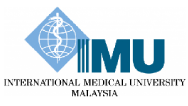Food availability and the rising obesity prevalence in Malaysia
Author: Geok-Lin Khor
ABSTRACT
It is estimated that more than 1.1 billion adults and 115 million children worldwide are overweight. In Malaysia, the second and third National Health and Morbidity Surveys in 1996 and 2006 respectively reported a three-fold increase in obesity prevalence among adults, surging from 4.4% to 14% over the 10-year period. Evidence of rising childhood obesity has also emerged. The aim of this article is to gather evidence from food availability data for an insight into population shifts in dietary patterns that may help explain the rising obesity in this country. The nutrition transition was delineated in conjunction with the epidemiologic transition in order to explain the convergence of dietary practices, and the high prevalence of obesity and diet-related non-communicable diseases worldwide. The Food Balance Sheets for Malaysia from 1967 to 2007 were used to provide estimates and trends for the availability of foods and calories. Evidence is generated that indicate at least two major upward shifts in the dietary patterns in Malaysia in the past 4 decades. These shifts have led to the rising availability of calories from animal products, and from sugar and sweeteners. These major dietary shifts, together with increased sedentariness, constitute core public health challenges faced in addressing the country’s obesity and noncommunicable diseases (NCD) conundrum.
Keywords: Obesity, nutrition transition, Food Balance Sheets, animal products, sugar and sweeteners.
Citation: IeJSME 2012: 6 (Suppl 1): S61-S68

